Chirui Chang
NoteIt: A System Converting Instructional Videos to Interactable Notes Through Multimodal Video Understanding
Aug 20, 2025



Abstract:Users often take notes for instructional videos to access key knowledge later without revisiting long videos. Automated note generation tools enable users to obtain informative notes efficiently. However, notes generated by existing research or off-the-shelf tools fail to preserve the information conveyed in the original videos comprehensively, nor can they satisfy users' expectations for diverse presentation formats and interactive features when using notes digitally. In this work, we present NoteIt, a system, which automatically converts instructional videos to interactable notes using a novel pipeline that faithfully extracts hierarchical structure and multimodal key information from videos. With NoteIt's interface, users can interact with the system to further customize the content and presentation formats of the notes according to their preferences. We conducted both a technical evaluation and a comparison user study (N=36). The solid performance in objective metrics and the positive user feedback demonstrated the effectiveness of the pipeline and the overall usability of NoteIt. Project website: https://zhaorunning.github.io/NoteIt/
Aligning Effective Tokens with Video Anomaly in Large Language Models
Aug 08, 2025Abstract:Understanding abnormal events in videos is a vital and challenging task that has garnered significant attention in a wide range of applications. Although current video understanding Multi-modal Large Language Models (MLLMs) are capable of analyzing general videos, they often struggle to handle anomalies due to the spatial and temporal sparsity of abnormal events, where the redundant information always leads to suboptimal outcomes. To address these challenges, exploiting the representation and generalization capabilities of Vison Language Models (VLMs) and Large Language Models (LLMs), we propose VA-GPT, a novel MLLM designed for summarizing and localizing abnormal events in various videos. Our approach efficiently aligns effective tokens between visual encoders and LLMs through two key proposed modules: Spatial Effective Token Selection (SETS) and Temporal Effective Token Generation (TETG). These modules enable our model to effectively capture and analyze both spatial and temporal information associated with abnormal events, resulting in more accurate responses and interactions. Furthermore, we construct an instruction-following dataset specifically for fine-tuning video-anomaly-aware MLLMs, and introduce a cross-domain evaluation benchmark based on XD-Violence dataset. Our proposed method outperforms existing state-of-the-art methods on various benchmarks.
What Matters in Detecting AI-Generated Videos like Sora?
Jun 27, 2024Abstract:Recent advancements in diffusion-based video generation have showcased remarkable results, yet the gap between synthetic and real-world videos remains under-explored. In this study, we examine this gap from three fundamental perspectives: appearance, motion, and geometry, comparing real-world videos with those generated by a state-of-the-art AI model, Stable Video Diffusion. To achieve this, we train three classifiers using 3D convolutional networks, each targeting distinct aspects: vision foundation model features for appearance, optical flow for motion, and monocular depth for geometry. Each classifier exhibits strong performance in fake video detection, both qualitatively and quantitatively. This indicates that AI-generated videos are still easily detectable, and a significant gap between real and fake videos persists. Furthermore, utilizing the Grad-CAM, we pinpoint systematic failures of AI-generated videos in appearance, motion, and geometry. Finally, we propose an Ensemble-of-Experts model that integrates appearance, optical flow, and depth information for fake video detection, resulting in enhanced robustness and generalization ability. Our model is capable of detecting videos generated by Sora with high accuracy, even without exposure to any Sora videos during training. This suggests that the gap between real and fake videos can be generalized across various video generative models. Project page: https://justin-crchang.github.io/3DCNNDetection.github.io/
Object-level Scene Deocclusion
Jun 11, 2024
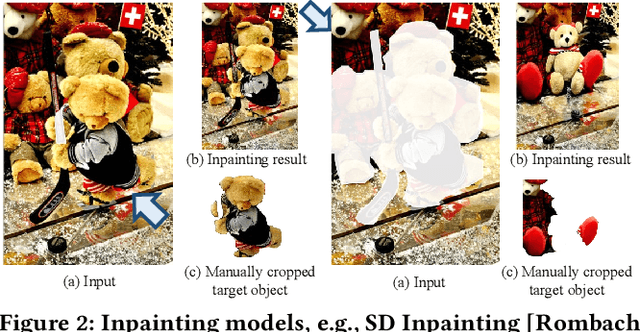


Abstract:Deoccluding the hidden portions of objects in a scene is a formidable task, particularly when addressing real-world scenes. In this paper, we present a new self-supervised PArallel visible-to-COmplete diffusion framework, named PACO, a foundation model for object-level scene deocclusion. Leveraging the rich prior of pre-trained models, we first design the parallel variational autoencoder, which produces a full-view feature map that simultaneously encodes multiple complete objects, and the visible-to-complete latent generator, which learns to implicitly predict the full-view feature map from partial-view feature map and text prompts extracted from the incomplete objects in the input image. To train PACO, we create a large-scale dataset with 500k samples to enable self-supervised learning, avoiding tedious annotations of the amodal masks and occluded regions. At inference, we devise a layer-wise deocclusion strategy to improve efficiency while maintaining the deocclusion quality. Extensive experiments on COCOA and various real-world scenes demonstrate the superior capability of PACO for scene deocclusion, surpassing the state of the arts by a large margin. Our method can also be extended to cross-domain scenes and novel categories that are not covered by the training set. Further, we demonstrate the deocclusion applicability of PACO in single-view 3D scene reconstruction and object recomposition.
Total-Decom: Decomposed 3D Scene Reconstruction with Minimal Interaction
Mar 30, 2024
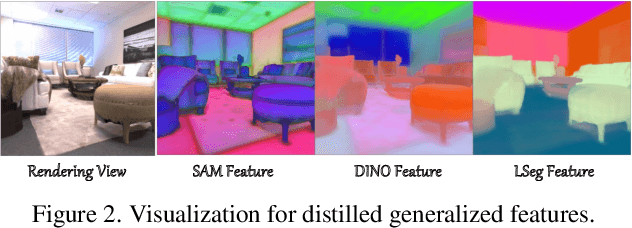
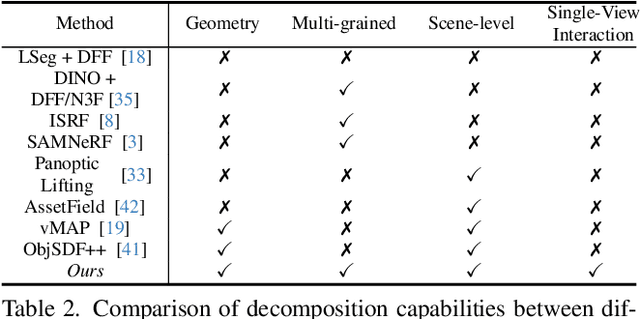

Abstract:Scene reconstruction from multi-view images is a fundamental problem in computer vision and graphics. Recent neural implicit surface reconstruction methods have achieved high-quality results; however, editing and manipulating the 3D geometry of reconstructed scenes remains challenging due to the absence of naturally decomposed object entities and complex object/background compositions. In this paper, we present Total-Decom, a novel method for decomposed 3D reconstruction with minimal human interaction. Our approach seamlessly integrates the Segment Anything Model (SAM) with hybrid implicit-explicit neural surface representations and a mesh-based region-growing technique for accurate 3D object decomposition. Total-Decom requires minimal human annotations while providing users with real-time control over the granularity and quality of decomposition. We extensively evaluate our method on benchmark datasets and demonstrate its potential for downstream applications, such as animation and scene editing. The code is available at https://github.com/CVMI-Lab/Total-Decom.git.
MarS3D: A Plug-and-Play Motion-Aware Model for Semantic Segmentation on Multi-Scan 3D Point Clouds
Jul 18, 2023Abstract:3D semantic segmentation on multi-scan large-scale point clouds plays an important role in autonomous systems. Unlike the single-scan-based semantic segmentation task, this task requires distinguishing the motion states of points in addition to their semantic categories. However, methods designed for single-scan-based segmentation tasks perform poorly on the multi-scan task due to the lacking of an effective way to integrate temporal information. We propose MarS3D, a plug-and-play motion-aware module for semantic segmentation on multi-scan 3D point clouds. This module can be flexibly combined with single-scan models to allow them to have multi-scan perception abilities. The model encompasses two key designs: the Cross-Frame Feature Embedding module for enriching representation learning and the Motion-Aware Feature Learning module for enhancing motion awareness. Extensive experiments show that MarS3D can improve the performance of the baseline model by a large margin. The code is available at https://github.com/CVMI-Lab/MarS3D.
ConcreteGraph: A Data Augmentation Method Leveraging the Properties of Concept Relatedness Estimation
Jun 25, 2022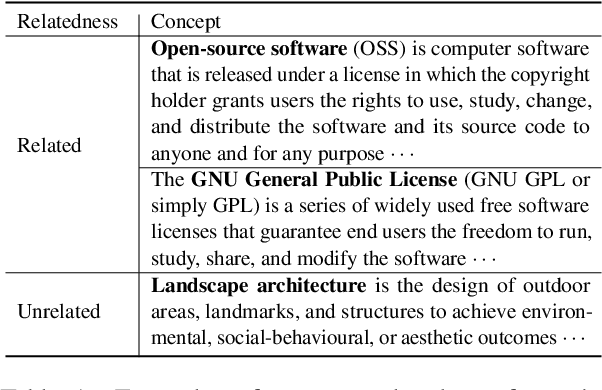

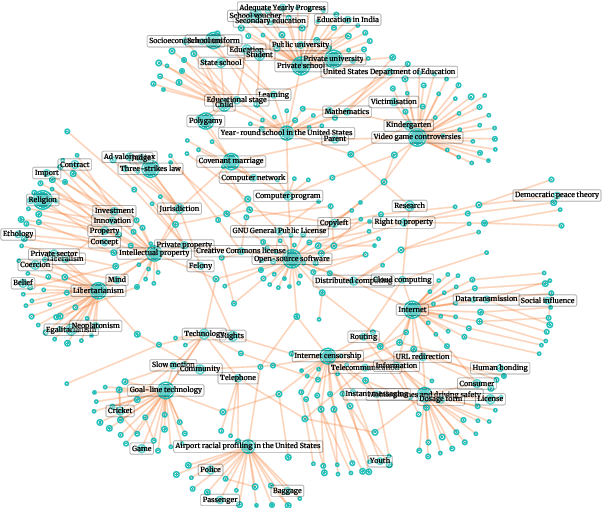
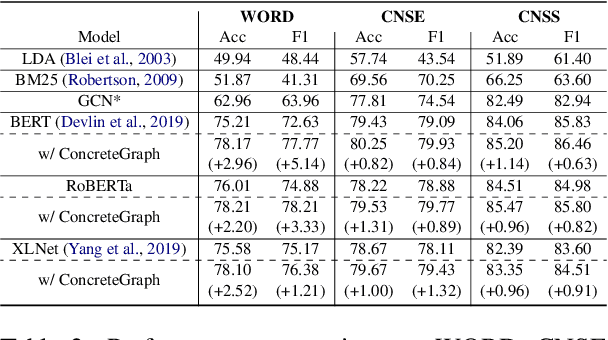
Abstract:The concept relatedness estimation (CRE) task is to determine whether two given concepts are related. Although existing methods for the semantic textual similarity (STS) task can be easily adapted to this task, the CRE task has some unique properties that can be leveraged to augment the datasets for addressing its data scarcity problem. In this paper, we construct a graph named ConcreteGraph (Concept relatedness estimation Graph) to take advantage of the CRE properties. For the sampled new concept pairs from the ConcreteGraph, we add an additional step of filtering out the new concept pairs with low quality based on simple yet effective quality thresholding. We apply the ConcreteGraph data augmentation on three Transformer-based models to show its efficacy. Detailed ablation study for quality thresholding further shows that even a limited amount of high-quality data is more beneficial than a large quantity of unthresholded data. This paper is the first one to work on the WORD dataset and the proposed ConcreteGraph can boost the accuracy of the Transformers by more than 2%. All three Transformers, with the help of ConcreteGraph, can outperform the current state-of-theart method, Concept Interaction Graph (CIG), on the CNSE and CNSS datasets.
 Add to Chrome
Add to Chrome Add to Firefox
Add to Firefox Add to Edge
Add to Edge